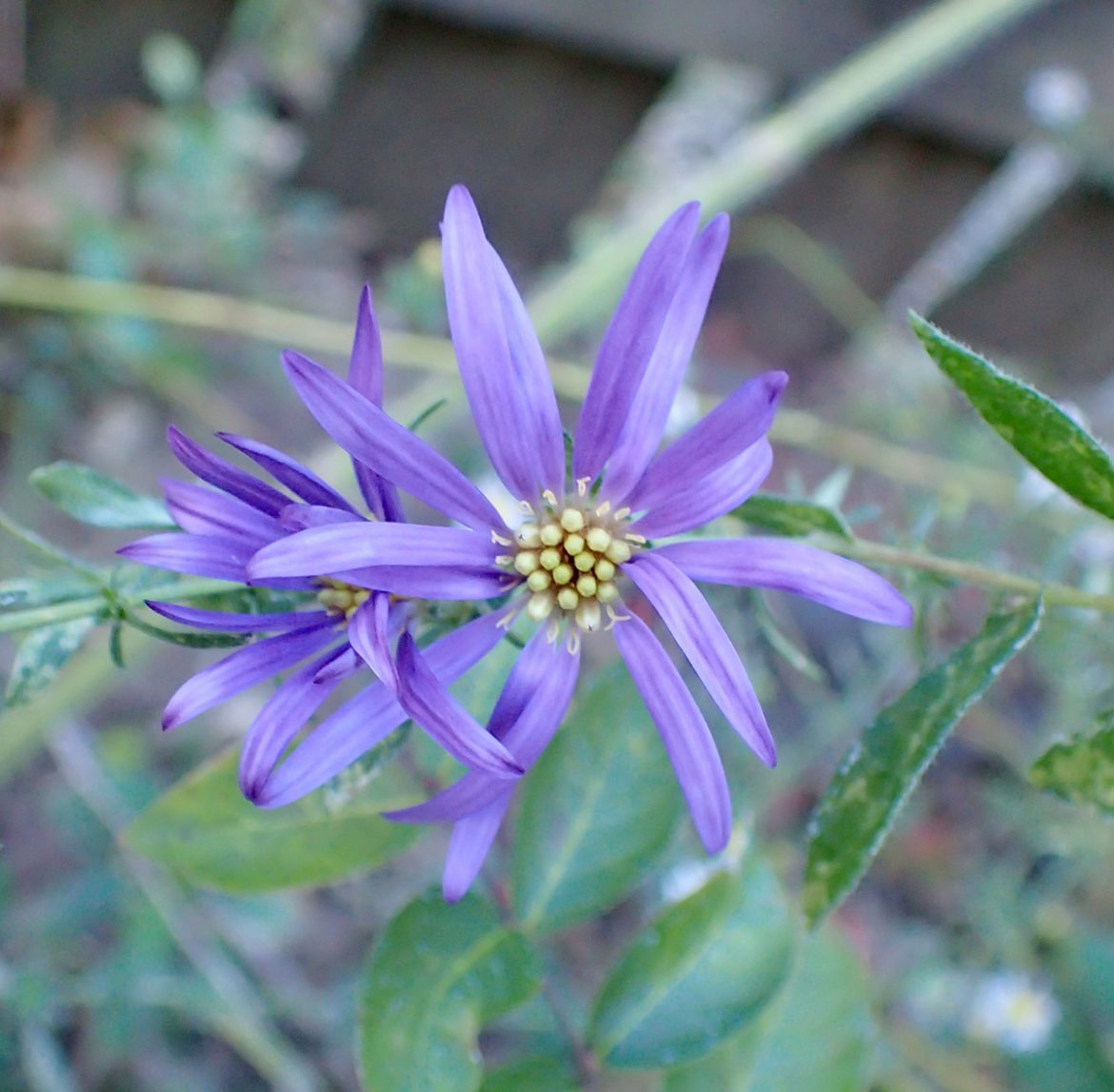I’m combining three months of the year into one post, for several reasons. One is that I was out of town a lot during this time, so I missed a fair amount of weekend time at home. Another is a harsh drought that I think slowed the garden way down, even after rains returned and the garden rebounded. Once a lot of out pollinator plants became stressed or died back, we saw less pollinators and other insects. And I wasn’t around as much to keep an eye out for the smaller guys under leaves and such.
The drought was the major event of 2019 in our yard. We went without rain from August 27 through October 14- 47 days. That’s an entire September with no rain. It has me thinking a lot about what I might do to better drought-proof the yard. After all, harsh droughts are becoming more and more the norm.
As I see it, I have two major challenges. One is that I have a lot of potted plants. Those are going to dry out faster than plants in the ground or in raised beds, and so they require daily watering. And even that wasn’t enough for a lot of them.
The second problem is the side yard. As I’ve written previously, I pulled up a bunch of pavers in late 2018 to expose the ground. What was underneath was compacted and dry. Some plants are succeeding there, while others have had trouble. I do think my casual attitude concerning weeds is allowing a lot of small roots to break up this mass and make it more permeable for water and larger plants’ roots. I also let leaves sit and decompose which, along with giving several species of insect a habitat in the fall and winter months, will create a layer of topsoil as the litter decomposes.
Flower Cycles | Dying back, seeding, and Re-sprouting
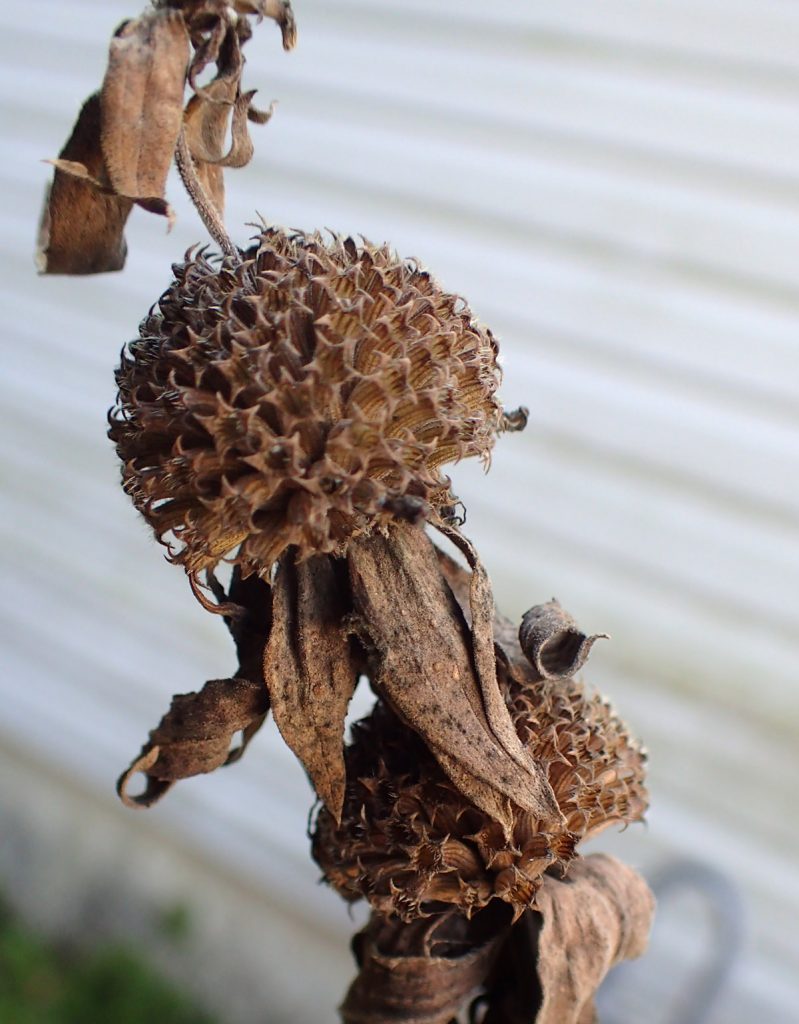
This isn’t a photo of a plant killed by drought, though maybe the process sped up. Dotted horsemint (Monarda punctata), also known as spotted bee balm, blooms for a few weeks at the end of summer. You can see the beginning of the bloom in our August Backyard post. And then, in September, it was a major focal point for bee and wasp activity in the yard. And here, in October, the head is full of seed pods. I’m excited about this because these plants are some of the few wildflowers I’ve successfully raised from seeds. Some flowers grow much more easily than others, and this is one of the easiest.
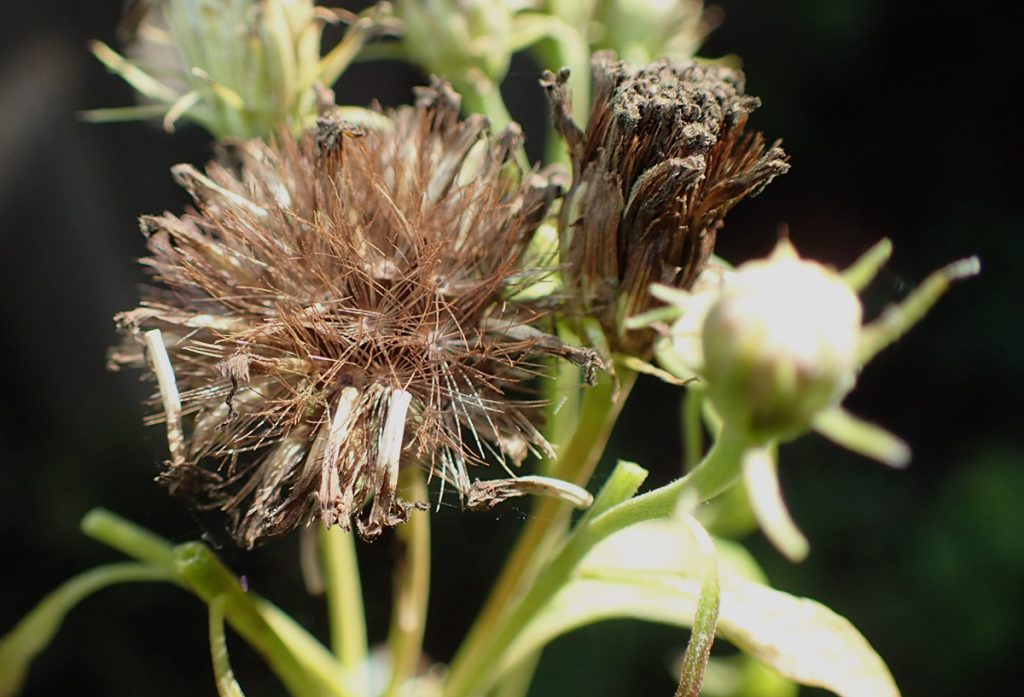
We’ll see what we can do with these Brickellia seeds. Here’s a plant that died back to its roots last year, sprouted again during the summer, and bloomed around the same time as the bee balm. These are its seeds in October. By December, the above ground portion of the plant had died completely.
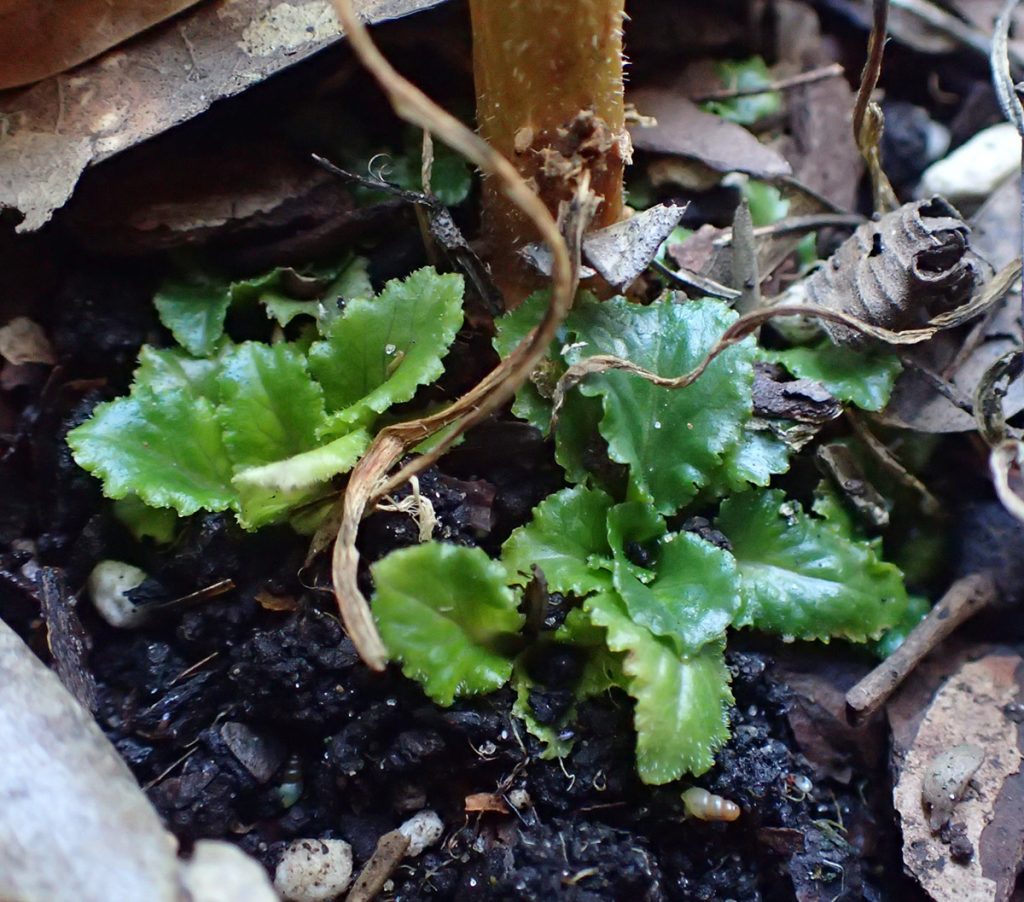
And here’s our other late summer flower. That August post has photos of all three starting to bloom. It died back completely, likely before it would have had it gotten rain. But here it is, growing back from its roots like it started to do earlier this year. I was able to collect some seeds from this one, too.
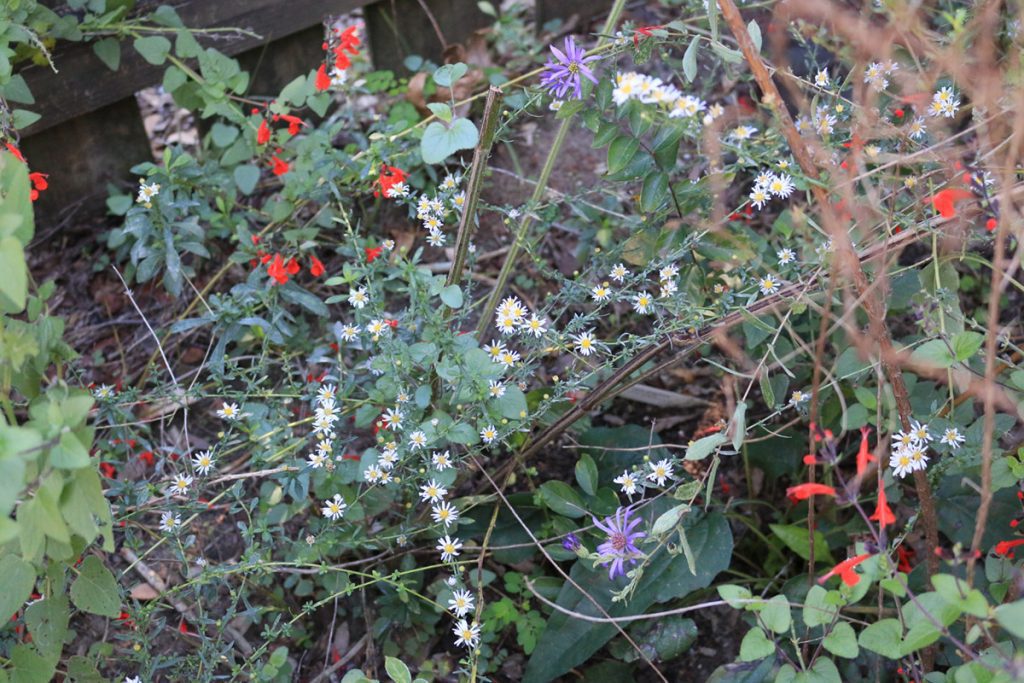
Transitioning to the Fall and Winter Flowers
The flower patch in the above photo has been a major pollinator hub in our yard, and is frequently the focus of this blog. Starting in the spring, we saw red Salvia, purple coneflowers, and winged loosestryfe here, with some fanpetal shrubs off to the side. Then the Brickellia joined in over the late summer. That’s in the photo below. As you see in the late October photo, above, we now have a new seasonal assortment of flowers here.
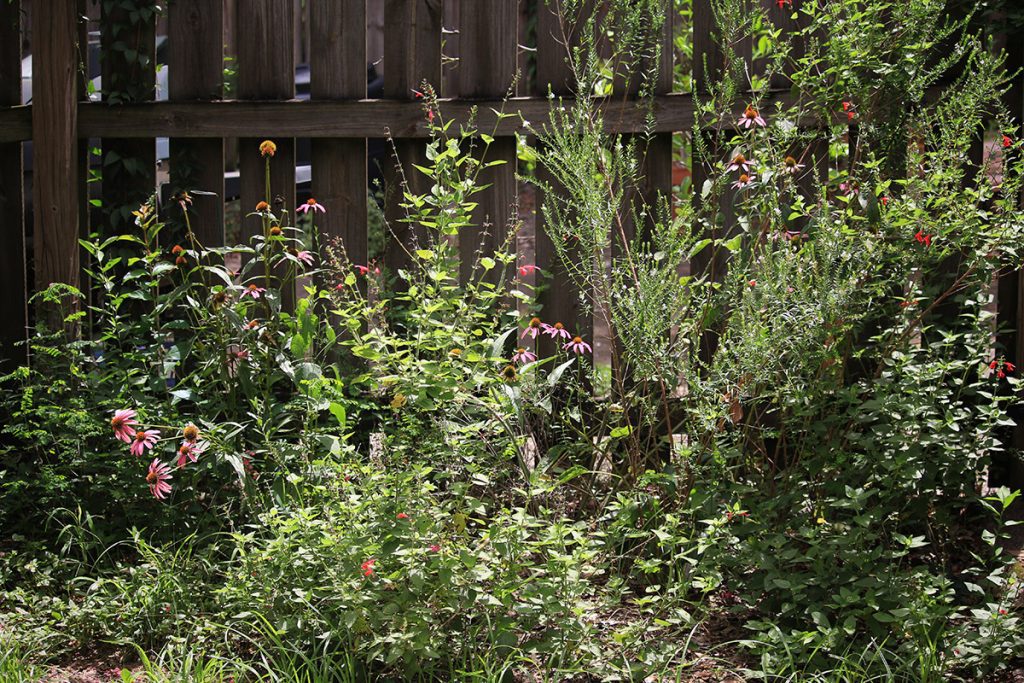
The purple coneflowers and winged loosestryfe died back by the end of September. Let’s take a look at the newcomers, which were in actuality here all along.
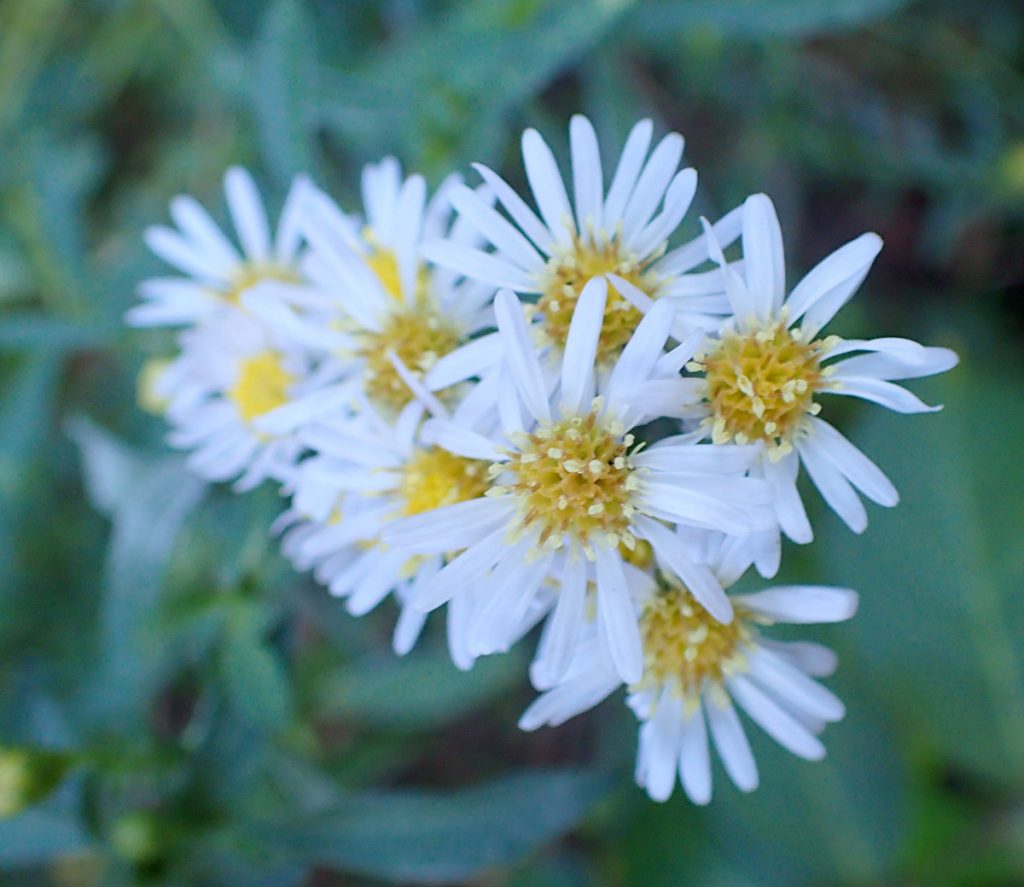
I planted that flower patch in late 2018, in the first section of the side yard where I pulled up pavers. These flowers predate that; they’ve grown along the fence as welcome weeds for years.
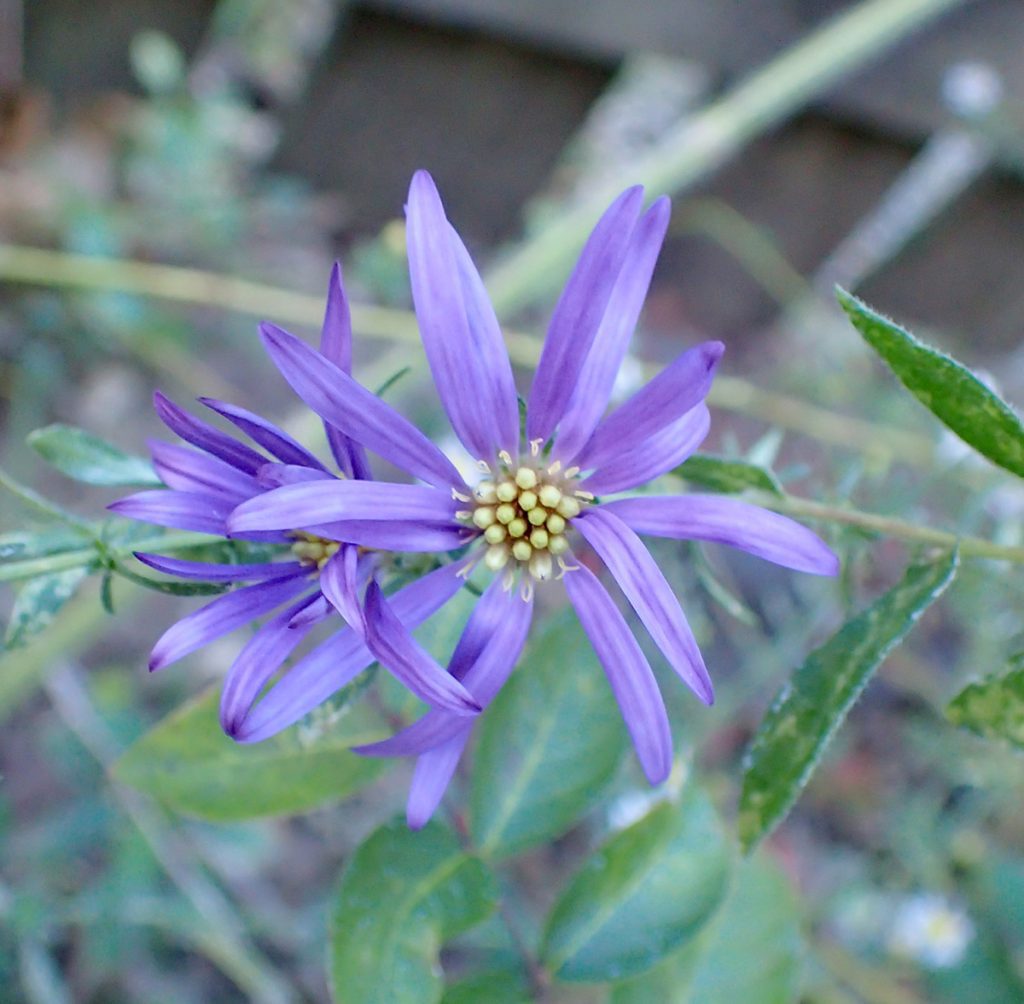
This is a rare plant that’s been under consideration for Endangered listing for some time. It is, like so many species of milkweed, a victim of fire exclusion in longleaf habitats. I don’t burn my yard, of course, but I can keep this space clear of other encroaching plants, much like fire would. I planted it in late 2018 and, like the Brickellia, it died back within a few weeks.
I’m excited that this flower patch had plants bloom in three seasonal phases. In theory I just have to keep weeding it to maintain it. I have to watch for fanpetals and even the red sage, which both reseed and grow everywhere easily. Are they beneficial plants? Yes. But if I’m not careful, they’ll crowd out the other plants when they’re dormant.
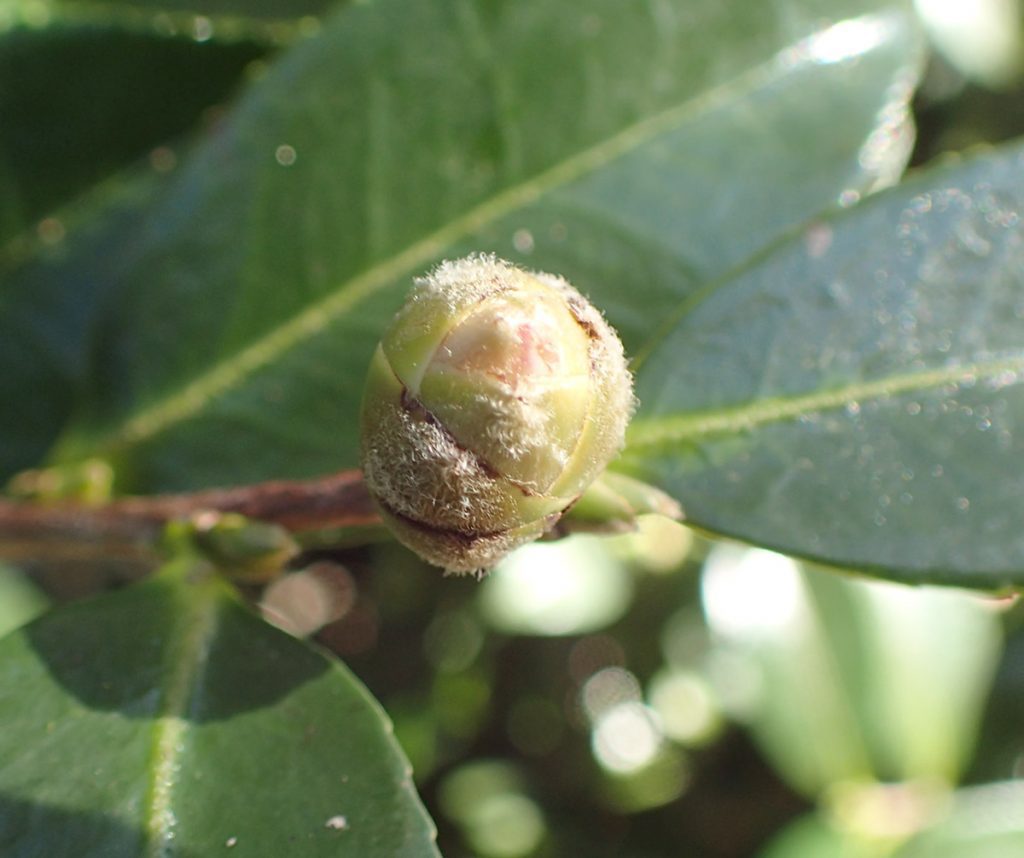
And lastly, here’s a photo from November. I don’t remember if these started blooming in December. They must have. But it was a busy month, and I was barely here. I’ll have a camellia photo or two in the January 2020 Backyard Blog.
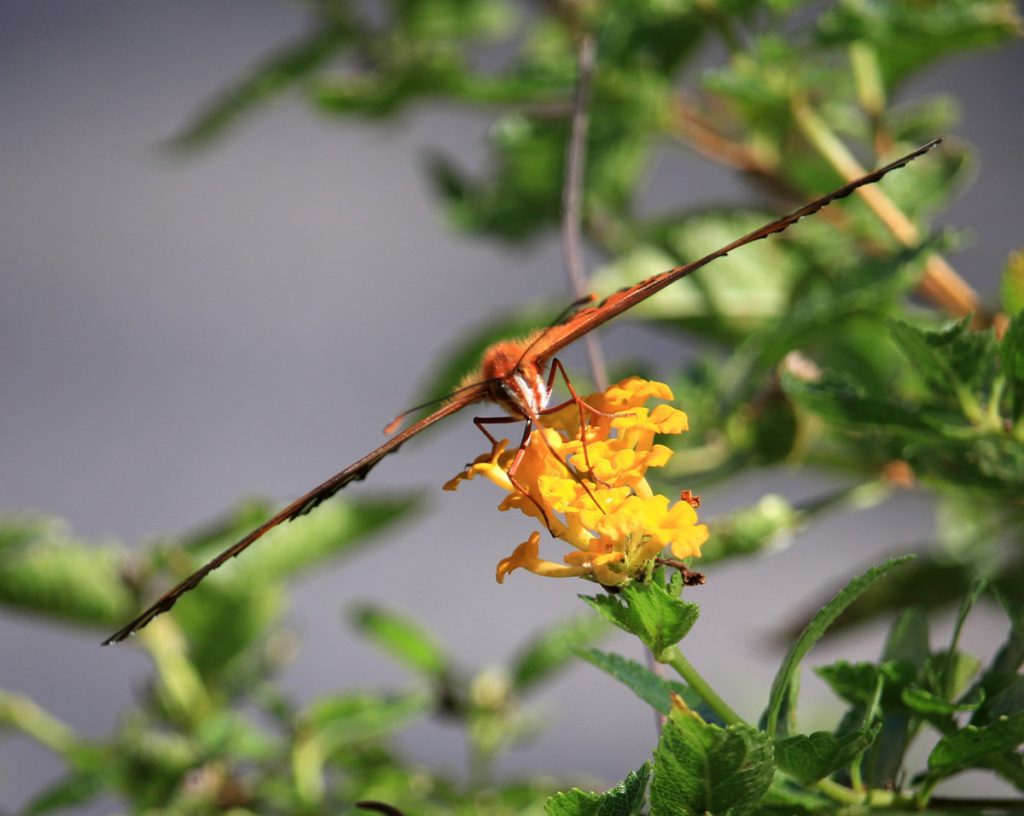
Yes, We Still Had Some Pollinators During the Drought
On October 14, I was at one of my older son’s swim meets. We weren’t half an hour in when we were drenched by a much awaited downpour. It was a bit north of where we live, so as the rain thinned on our drive home, I worried that maybe we wouldn’t see any of it in the yard. I would never have imagined the relief I felt that evening, that a wet yard could make me so happy.
There were some plants, like our bell peppers, that I was ready to pull. What a surprise when their leaves perked up. They were flowering (unseasonably) within a few weeks. Other plants weren’t as lucky. A few plants, however, seemed to function perfectly well even during the drier period. This is where we saw pollinators in early October.
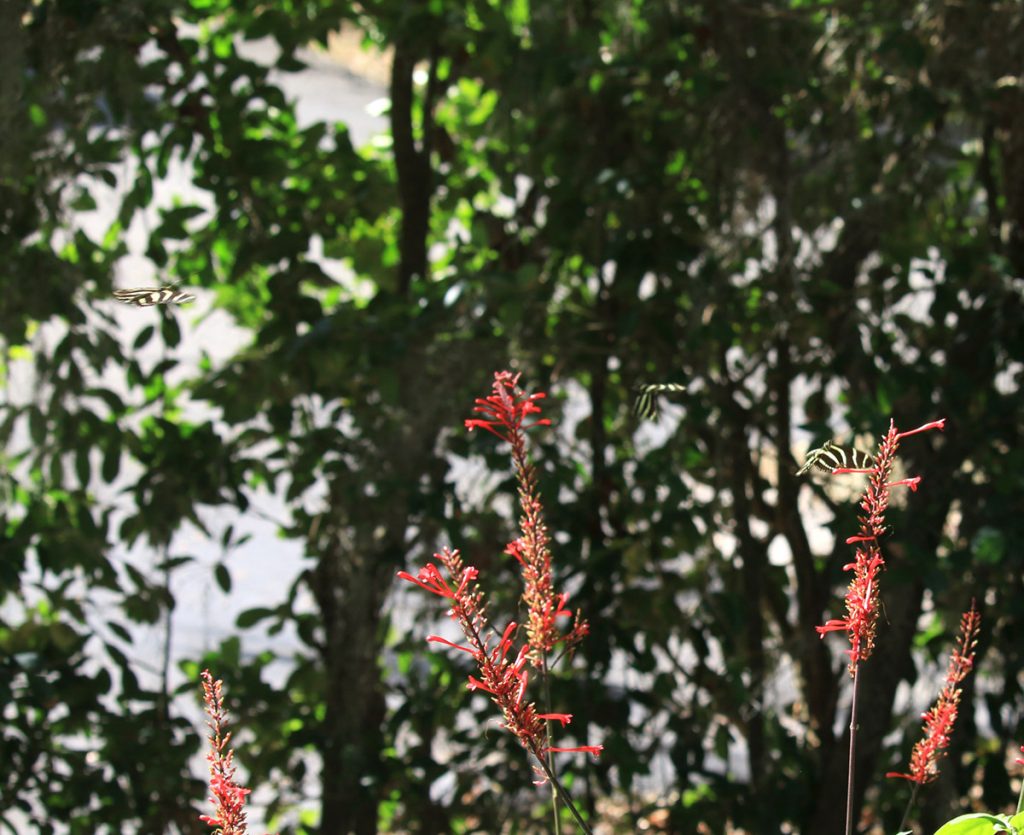
One was this cardinal guard bush I planted where we had a gap in our camellia bushes. It blooms in the late summer and I’ve seen it feed hummingbirds in the fall. Here, I witnessed a zebra longwing love triangle of sorts.
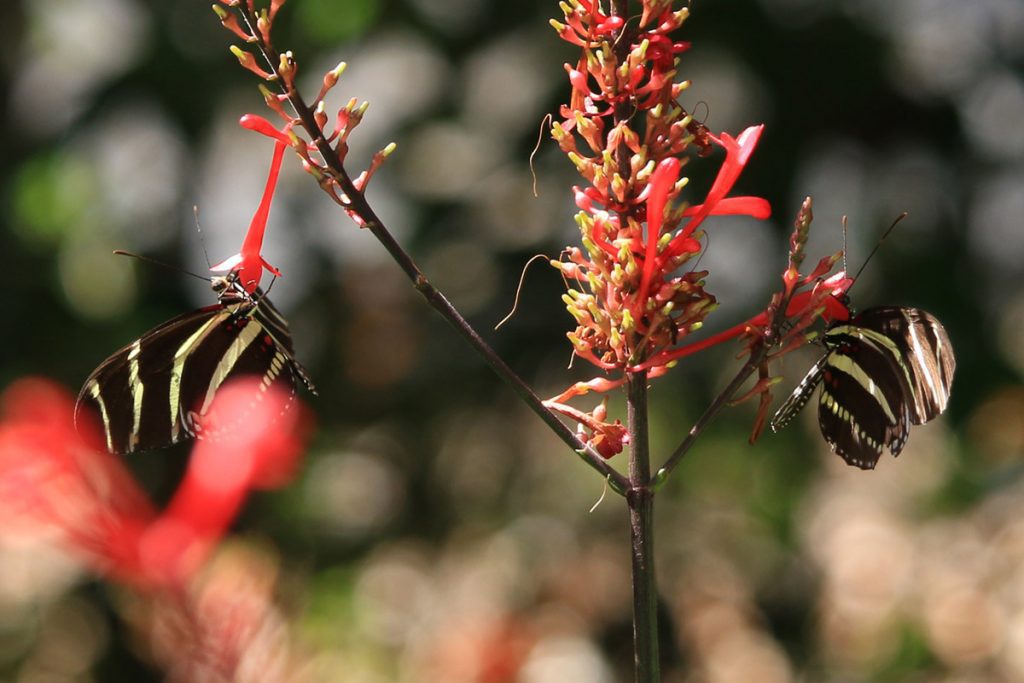
Siting on my porch, it looked like two of them (the males, I guess?) battled for the third.
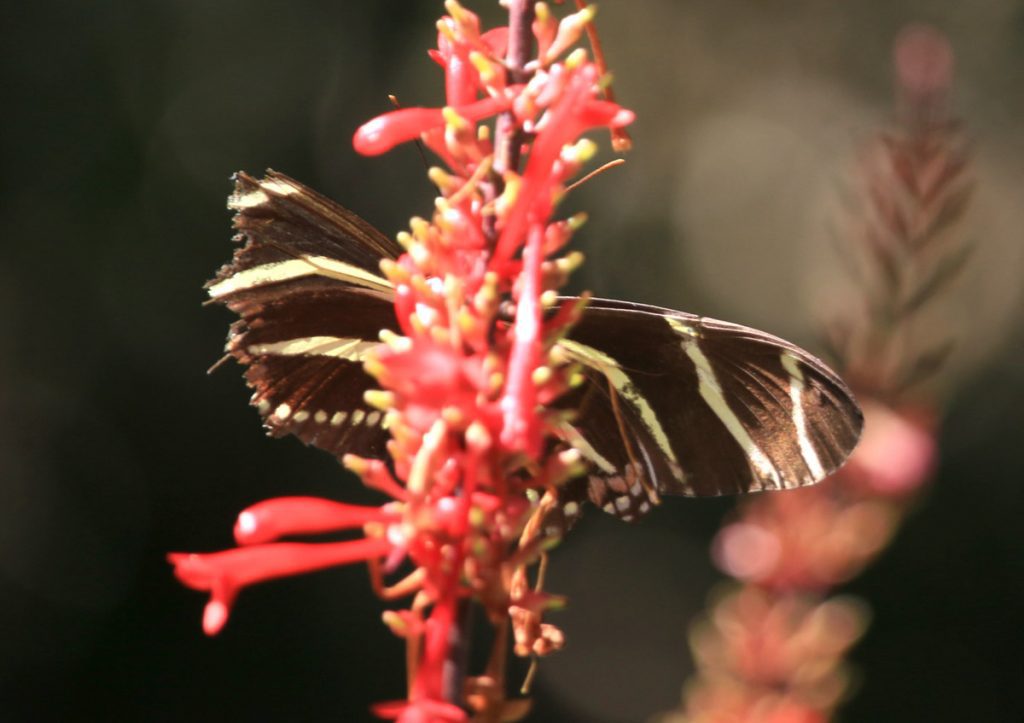
One of the suitors had a severely torn wing. It amazes me some of the butterflies I’ve seen with wing damage like this, that they’re still able to fly.
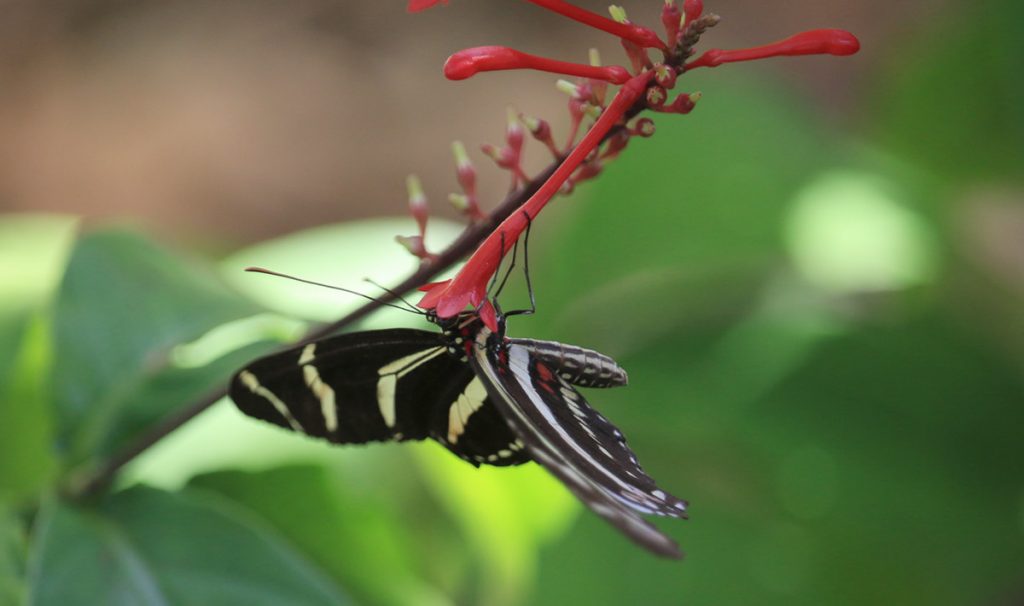
You can see here how the long flowers are well suited for insects with long probosces. Perhaps small sweat bees could fit all the way inside, as we’d seen with other flowers. I haven’t seen it with this plant, though.
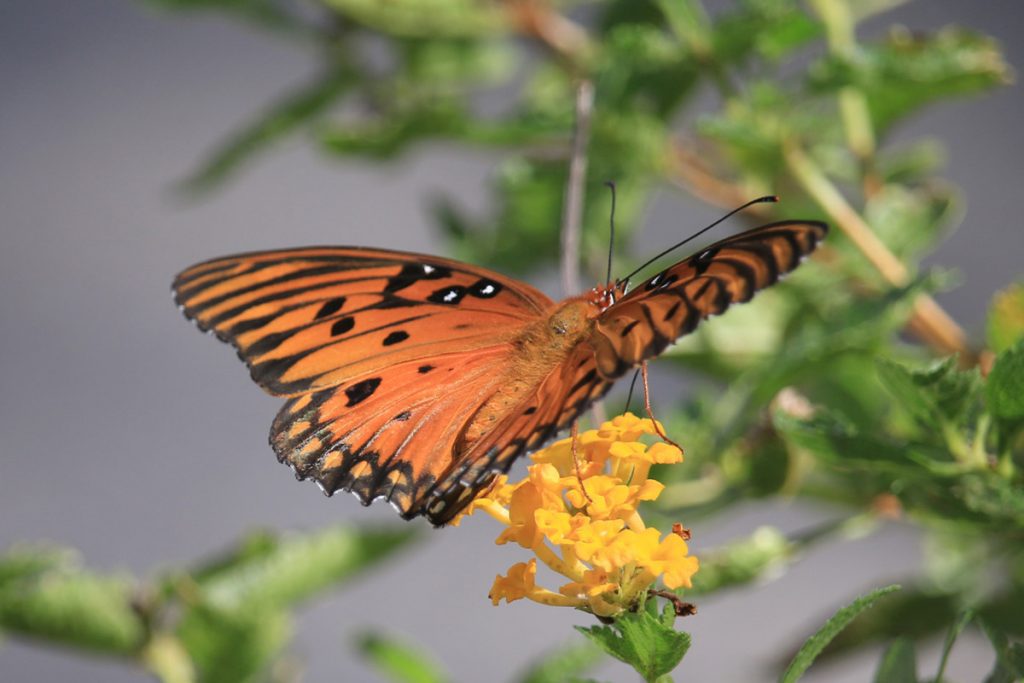
The other plants that did surprisingly well during the dry period were our lantana. I’ve noticed heavy rains tend to knock flowers off during the summer months. They kept their bloom pretty well this year.
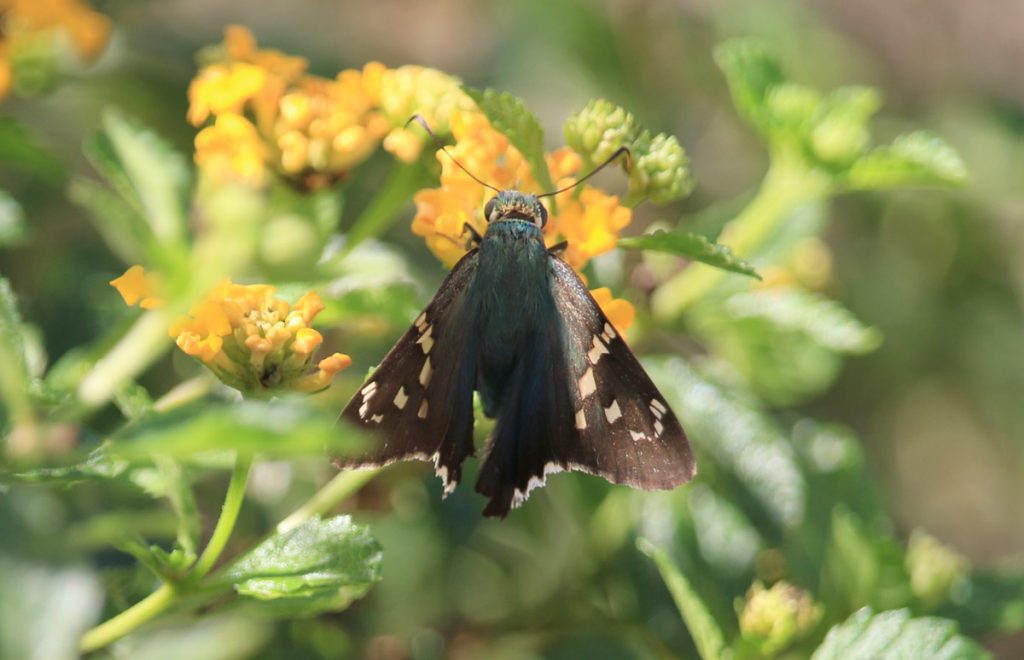
Long-tailed skippers love the pentas in our yard, and they use the bean and peas we plant every year to feed their caterpillars. The pentas died back in the drought (one of the two plants grew back), so I was happy to see this butterfly still feeding on the premises.
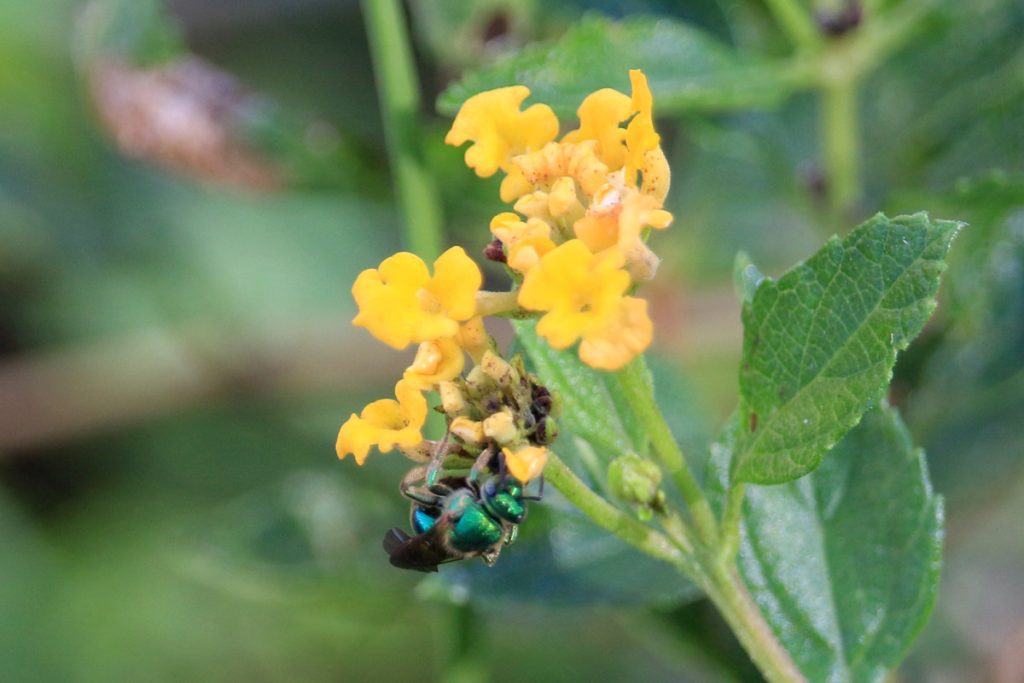
Most of our bee plants died back when it was dry, and we stopped seeing bees altogether by the end of September. We did have some wasp activity, though.
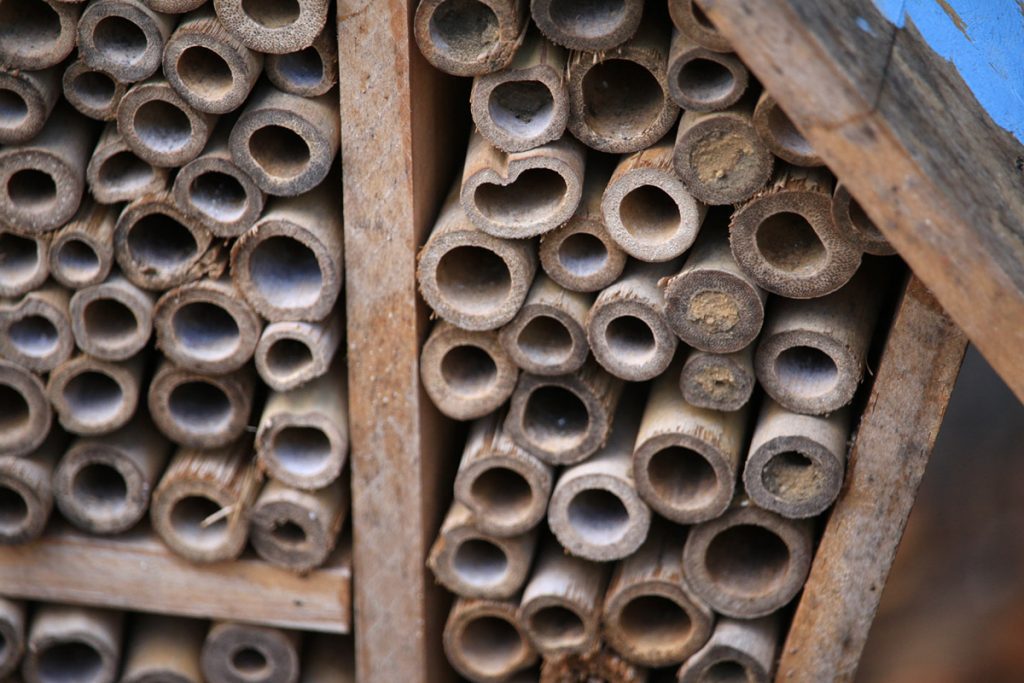
New weeds in the yard
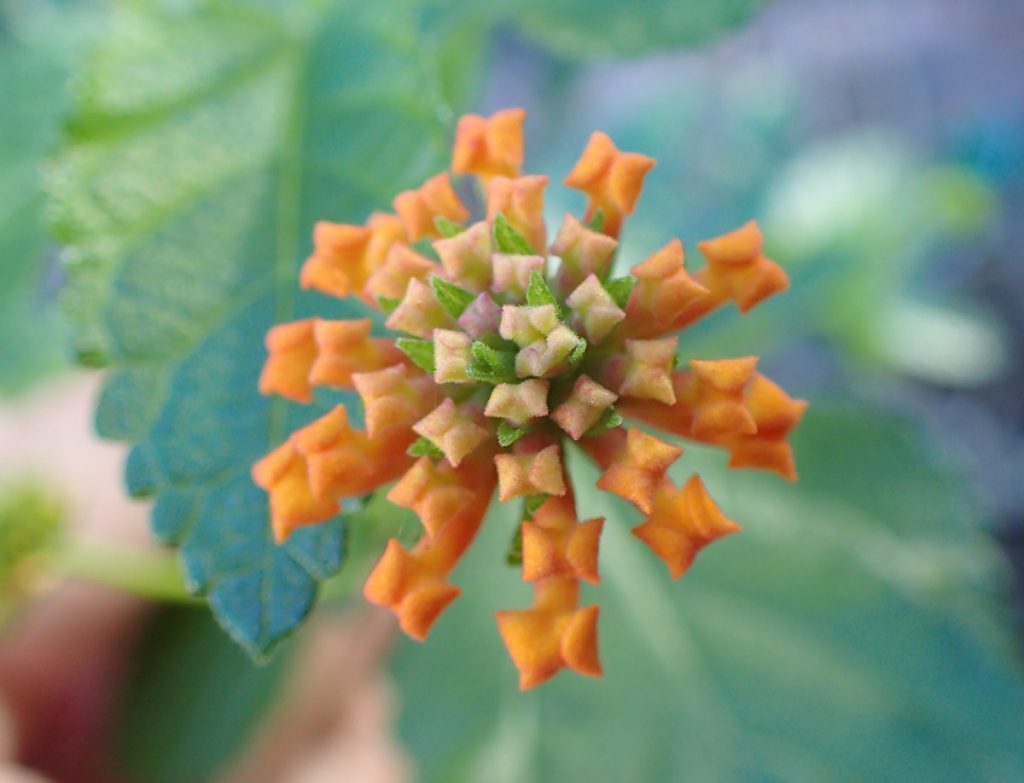
Insects love the lantana, but I’m wondering, as I write this, whether this is a weed to keep. It’s highly invasive, popping up in all sorts of places. Like the yellow lantana that predates our ownership of the house, it can lose its flowers fairly easily. I see it making seeds more often than flowers, actually. Maybe it’s time to pull the West Indian lantana, even if the flowers are pretty and popular with pollinating insects.
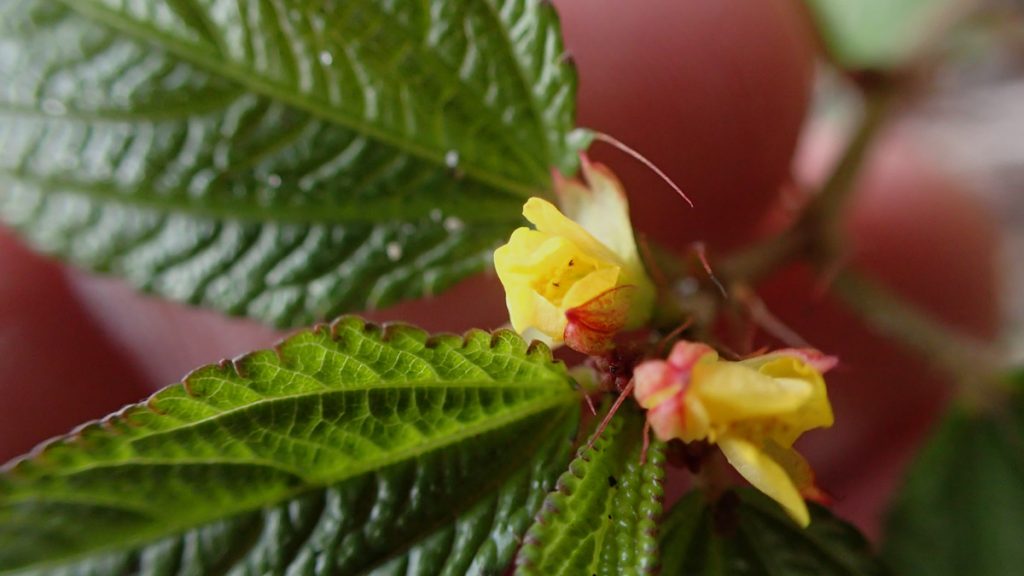
When our bean plants had died, I stopped weeding that raised bed and saw this flowering shrub pop up. It’s the same plant that had been growing out of a crack in the pavement in our backyard in September, but now I got to see how it looked when allowed to grow:
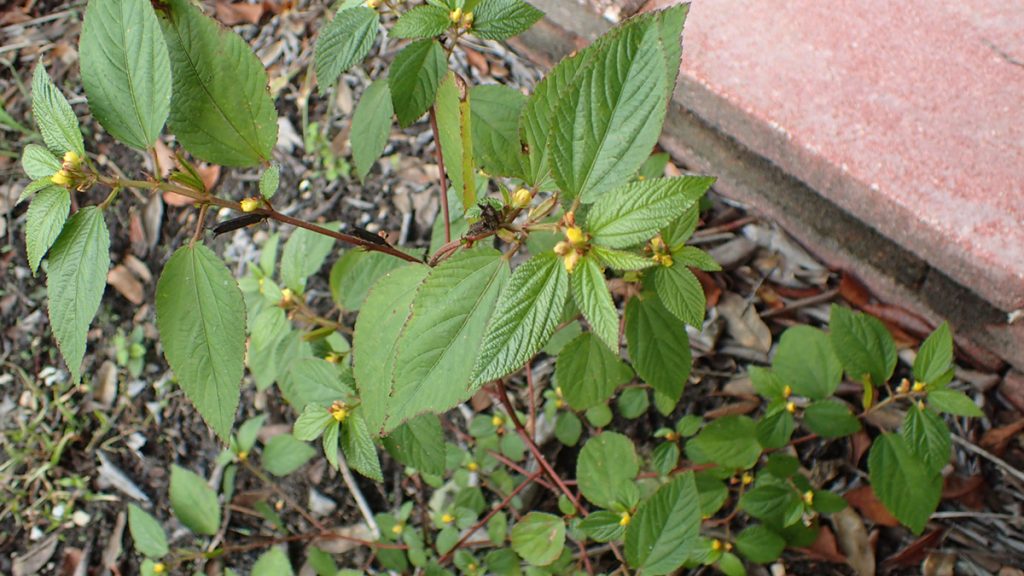
iNaturalist suggested the Corchorus genus. It also resembles certain fanpetal species, but not the Cuban jute (Sida rhombifolia) that grows everywhere in the yard where I don’t pull it up.
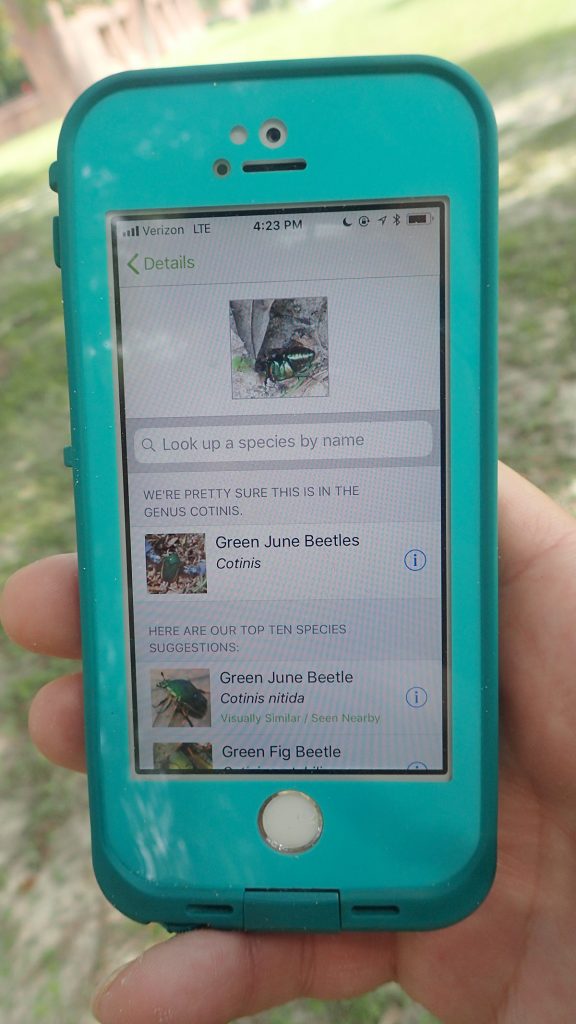
Apps and Citizen Science mentioned in the Backyard Blog
iNaturalist
Identify plants, animals, lichens, and fungi in your yard. Other users correct your identifications if you’re wrong, and even if they don’t, it can be a good springboard to further research.
Seek by iNaturalist
Instant identification, and it doesn’t record your location. This is a good option for kids with phones.
Monarch Larva Monitoring Project
Enter information about monarch caterpillars in your yard, and help researchers get a sense of the health of the monarch population that year, and how and when they’re migrating.
Great Sunflower Project
Record the number of pollinators visiting your flowers, and help researchers map pollinator activity across the country.
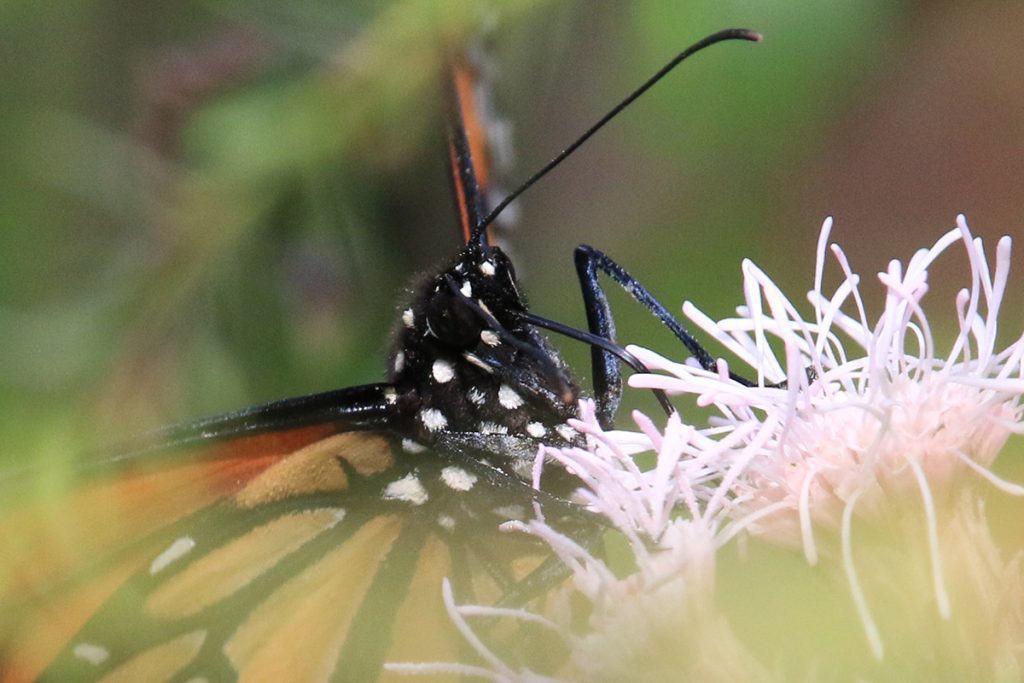
Dig Deeper into Backyard Ecology
What can we do to invite butterflies, birds, and other wildlife into our yards? And what about the flora and fauna that makes its way into our yards; the weeds, insects, and other critters that create the home ecosystem? WFSU Ecology Blog takes a closer look.

